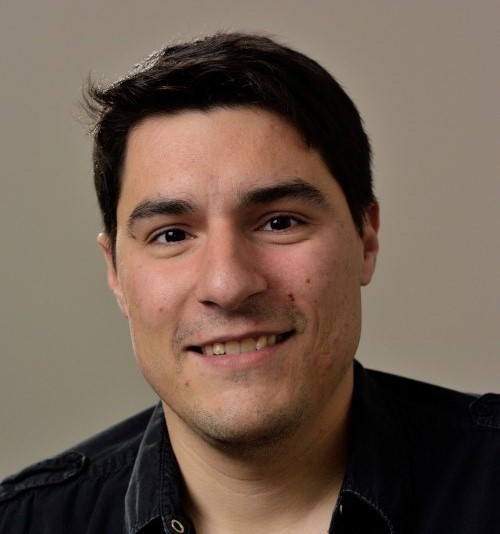Device Technologies and Biomedical Robotics
Development of cold microplasma point of care system to treat otitis media – advancements in a preclinical small animal model
(J-379) Development of cold microplasma point of care system to treat otitis media – advancements in a preclinical small animal model

Guillermo L. Monroy, PhD
Postdoctoral Research Associate
Beckman Institute for Advanced Science and Technology
Urbana, Illinois, United States- ZW
Zhenglung Wu
Graduate Research Assistant
University of Illinois at Urbana-Champaign, United States - KD
Kavita Desai Kabelitz, PhD
Graduate Research Assistant
University of Illinois at Urbana-Champaign, United States - MJ
Michael Jamrozy
Graduate Research Assistant
University of Illinois at Urbana-Champaign, United States - AH
Alexander Ho
Graduate Research Assistant
University of Illinois at Urbana-Champaign, United States - AM
Andrey Mironov
Research Assistant Professor
University of Illinois at Urbana-Champaign, United States - EC
Eric J. Chaney
Research Scientist
University of Illinois at Urbana-Champaign, United States - DS
Darold R. Spillman, Jr.
Academic Staff
Beckman Institute, United States - MM
Marina Marjanovic
Professor
University of Illinois at Urbana-Champaign, United States - EA
Edita Aksamitiene
Research Scientist
University of Illinois at Urbana-Champaign, United States - TN
Thanh Hong Nguyen
Professor
University of Illinois at Urbana-Champaign, United States - JE
J Gary Eden
Professor
University of Illinois at Urbana-Champaign, United States - SB
Stephen A. Boppart
Professor
University of Illinois at Urbana-Champaign, United States
Presenting Author(s)
Co-Author(s)
Bacterial otitis media (OM) is a highly prevalent disease that occurs in more than 90% of children before the age of 5. Our group has investigated optical coherence tomography (OCT) to non-invasively quantify changes in the middle ear, particularly effusions and biofilms, and as a diagnostic tool to classify normal, acute, and chronic OM in human participants. Yet, there remains an unmet need to develop a non-pharmacological point-of-care therapy to manage multiple presentations of OM, particularly if resistant to standard first-line broad spectrum antibiotics.
Materials and Methods::
Our team developed a portable and compact cold microplasma (CMP) device that produces high-energy radicals and reactive oxygen and nitrogen species. These diffuse through the eardrum and into the middle ear cavity to inactivate bacteria and clear biofilms. While plasma medicine is often applied to sterilize medical equipment, carefully applied CMP exposure is effective in treating cells or tissues directly without damage (thermal, cytotoxic, acoustic) and even promoting immune response. Chinchillas, the gold standard preclinical model for OM, were inoculated using a transbullar injection (non-typeable H. Influenzae). Control animals did not receive an inoculation, or received an inoculation + antibiotics, to evaluate for any side-effects of CMP. Both ears were treated for 15 minutes with a range of exposure protocols and longitudinally tracked with OCT to monitor treatment effects in the ear. Physical symptoms, along with OCT and otoscopy data, were used to conclude infection clearance.
Results, Conclusions, and Discussions::
In this feasibility study, safe and effective application of CMP treatments are demonstrated ex vivo, in vitro, and in vivo in the chinchilla model for human OM. Animals were each longitudinally tracked using OCT and otoscopy for approximately 21 days throughout the course of inoculated OM and treatment. Results show the clinical response to CMP treatments and synergistic interplay with antibiotics. Ongoing exposure protocol development will advance the application of CMP as a novel, safe, non-invasive, and effective non-pharmacologic treatment strategy for OM, and similarly to manage bacterial or biofilm-driven infections and/or buildup.
Acknowledgements (Optional): :
References (Optional): :
Won J, et al. Longitudinal optical coherence tomography to visualize the in vivo response of middle ear biofilms to antibiotic therapy. Sci Rep. 2021 Mar 4;11(1):5176.
